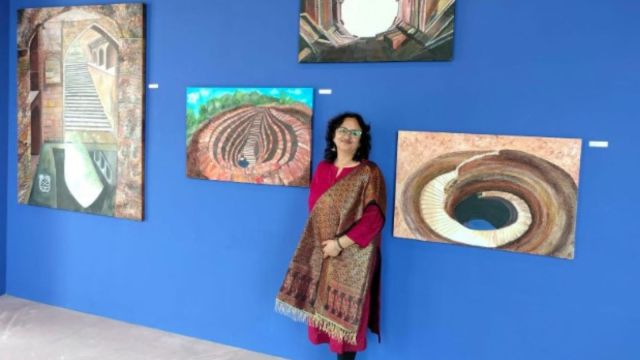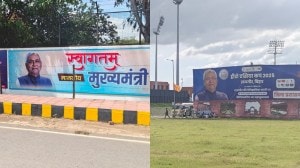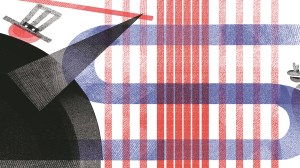Click here to join Express Pune WhatsApp channel and get a curated list of our stories
Why this Pune chartered accountant is in search of stepwells
Ghosh has visited step wells across Maharashtra, from the 18th century Baramotichi Vihir in Satara to Gumtachi Vihir Stepwell in a private property in Talegaon Dhabad, to several in Gujarat, Delhi and Rajasthan, among others.
 Barely two-and-a-half hours away from Pune is the marvellous step well of Loni Bhapkar whose sculptures amazed Pune-based artist Rashmi Ghosh
Barely two-and-a-half hours away from Pune is the marvellous step well of Loni Bhapkar whose sculptures amazed Pune-based artist Rashmi GhoshBarely two-and-a-half hours away from Pune, near Baramati, is the marvellous step well of Loni Bhapkar whose sculptures amazed Pune-based artist Rashmi Ghosh. “There is a beautiful Mallikarjun temple there and, though, it is broken, I managed to go inside with a priest,” she says.
Ghosh has visited step wells across Maharashtra, from the 18th century Baramotichi Vihir in Satara to Gumtachi Vihir Stepwell in a private property in Talegaon Dhabad, to several in Gujarat, Delhi and Rajasthan, among others.
Now, Ghosh is documenting the step wells through art. An exhibition, Mapping Stepwells: A Visual Narrative, to be held at Monalisa Kalagram in Koregaon Park will showcase her large-sized paintings, medium-sized charcoals and photographs, among others, themed around stepwells.
“I found turtles swimming at the Loni Bhapkar stepwell. The images of turtle on the floor are found in all Ganesha and Shiva temples all across Maharashtra representing the incarnation of Vishnu and detachment from worldly life in spiritual seekers. Hence, I have used the icon of the turtle in my artwork,” she says.
A chartered accountant, Ghosh was always learning an art form over weekends. Among her teachers were Pune-based Milind Mullick. It was during Covid that Ghosh started making artwork full-time, which would lead to her present subject of stepwells.
Known as baoli bavadi bahuli or vav in different parts of India, step wells are ancient water storage structures once vital to the survival of the people who worked in fields, went on pilgrimages or lived near it. Four paintings from Ghosh’s series “Descent into India’s Incredible Stepwells” featured in the India Art Architecture and Design Biennale 2023 at the Red Fort in Delhi. Her works depict the breathtaking range of architecture of India’s step wells that are unknown to most people.
“I have met one person who has written a book on the stepwell architecture of Maharashtra.I believe that there are 20,000 step wells in the state but hardly any research into them or documentation. In the absence of sufficient material, I am finding it very difficult. I have met locals in certain areas who say that every other day, when they dig, they find a stepwell,” says Ghosh whose search into these wonders of the past has only just begun.
Click here to join Express Pune WhatsApp channel and get a curated list of our stories








